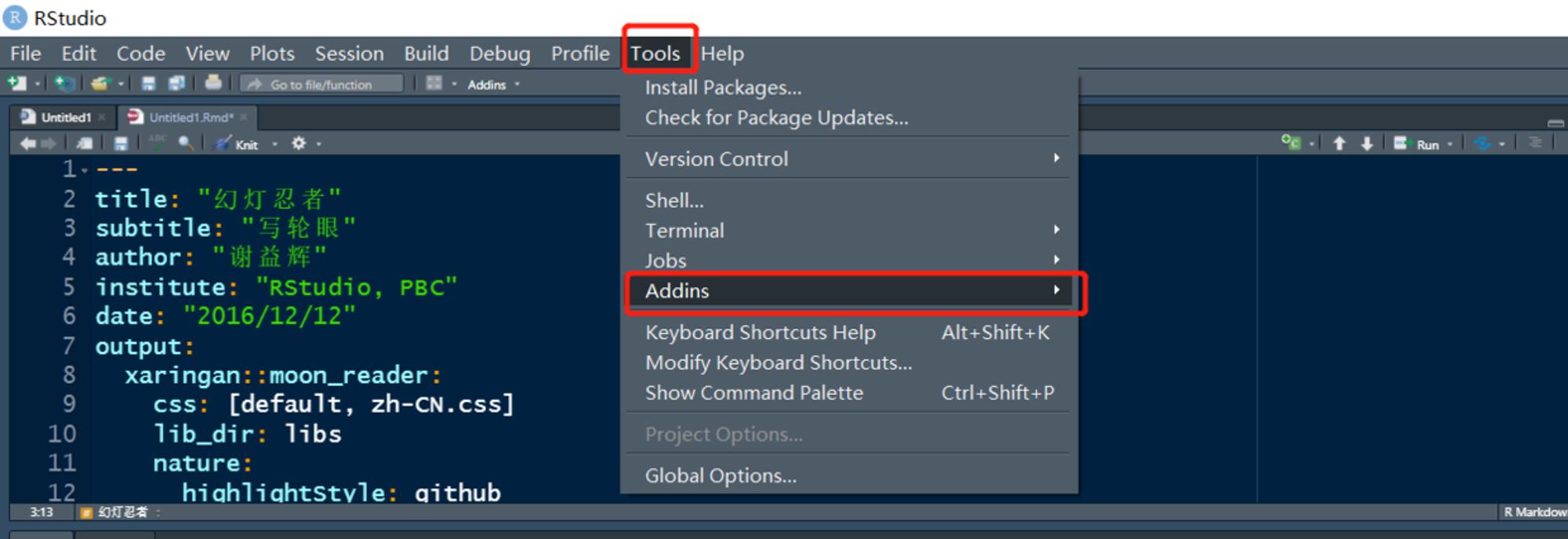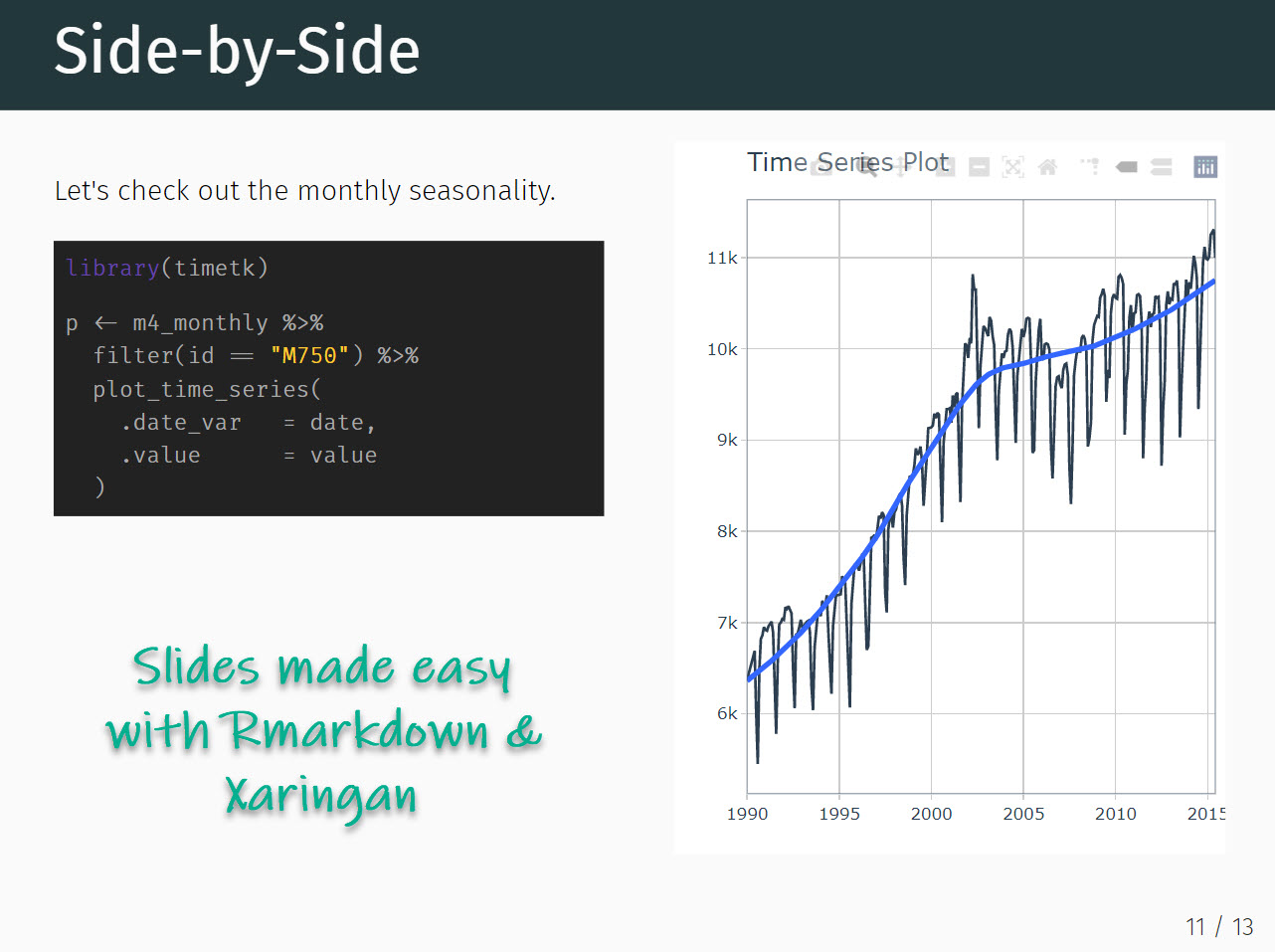

#RMARKDOWN PRESENTATION CODE#
To call Shiny code from an R Markdown document, add runtime: shiny to the header: title: "Shiny Web App" An alternative approach is to use shiny, a package that allows you to create interactivity using R code, not JavaScript. However, that fundamentally limits what you can do to things that have been implemented in HTML and JavaScript. On one hand, that’s great because you can distribute the HTML file without any connection to R. Htmlwidgets provide client-side interactivity - all the interactivity happens in the browser, independently of R. Ggplot(diamonds, aes(color)) + geom_bar()įlexdashboard also provides simple tools for creating sidebars, tabsets, value boxes, and gauges. Ggplot(diamonds, aes(carat)) + geom_histogram(binwidth = 0.1) Knitr::opts_chunk$set(fig.width = 5, fig.asp = 1/3)

Flexdashboard makes it particularly easy to create dashboards using R Markdown and a convention for how the headers affect the layout: You can easily see how the results of your analysis (not just the code) change over time, and GitHub will render it for you nicely online.ĭashboards are a useful way to communicate large amounts of information visually and quickly. github_document creates a minimal md file that you can check into git. Html_notebook gives you a local preview, and a file that you can share via email.

As mentioned earlier, Git and GitHub are outside the scope of the book, but there’s one tip that’s useful if you’re already using them: use both html_notebook and github_document outputs: output: Learning Git and GitHub is definitely painful at first, but the collaboration payoff is huge. If this starts to happen, it’s a good time to learn Git and GitHub. But things will get painful as soon as they want to make changes. nb.html files is a simple way to share analyses with your colleagues. In the future, you will also be able include supporting files (e.g.csv data files), which will be automatically extracted when needed.Įmailing. nb.html file, RStudio will automatically recreate. Unlike html_document, this rendering always includes an embedded copy of the source code that generated it. You can view it in a web browser, and see the rendered output. nb.html generated by the notebook in two ways:
#RMARKDOWN PRESENTATION FULL#
Both HTML outputs will contain the fully rendered output, but the notebook also contains the full source code. These different purposes lead to using the HTML output in different ways. A html_document is focussed on communicating with decision makers, while a notebook is focussed on collaborating with other data scientists. The rendered outputs are very similar, but the purpose is different. Remember, when generating a document to share with decision makers, you can turn off the default display of code by setting global options in the setup chunk: knitr::opts_chunk$set(echo = FALSE)įor html_documents another option is to make the code chunks hidden by default, but visible with a click: output:Ī notebook, html_notebook, is a variation on a html_document. Github_document: this is a tailored version of md_document designed for sharing on GitHub. This isn’t typically useful by itself, but you might use it if, for example, your corporate CMS or lab wiki uses markdown.

Odt_document for OpenDocument Text documents (. Word_document for Microsoft Word documents (. RStudio will prompt you if you don’t already have it.
#RMARKDOWN PRESENTATION PDF#
Pdf_document makes a PDF with LaTeX (an open source document layout system), which you’ll need to install. There are number of basic variations on that theme, generating different types of documents: Lorem ipsum dolor sit amet consectetur adipiscing elit, urna consequat felis vehicula class ultricies mollis dictumst, aenean non a in donec nulla.Īs a reference read this section from Rmarkdown Cookbook.The previous chapter focussed on the default html_document output. :::::, or ::: etc.) and assign CSS class or id to them and then define css rules for class or id selector in a separate style.css file.


 0 kommentar(er)
0 kommentar(er)
